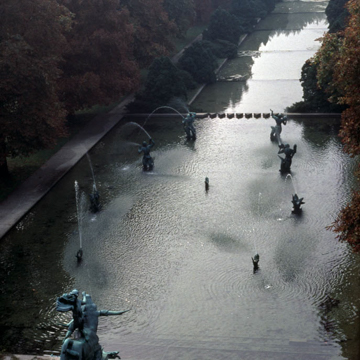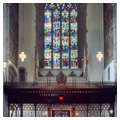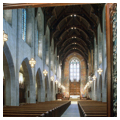The firm of Goodhue Associates was commissioned by George Booth in 1924 to design the church, with Murray as the chief architect and designer. The graceful stone church, representing Murray's masterful adaptation of English Gothic parish churches favored by Booth, was the last major collaborative work in this country of leading Arts and Crafts artists and craftsmen.
The exterior is embellished by the exquisite stone figures atop the buttresses carved by famed architectural sculptor Lee Lawrie, and the magnificent stained glass windows are by Niccola D'Ascenzo and James H. Hogan. The soaring, majestic interiors abound in examples of consummate craftsmanship. The open timberwork hammer-beam roof over the nave, decorated by Alfred E. Floegel, is softly lit by the diffused light from the grisaille-glass clerestory windows by G. Owen Bonawit. Frescoes on the three walls of the sanctuary are by Katherine McEwen, a founding member of the Society of Arts and Crafts; the handsome high altar reredos with its figure of Christ and the wooden doors were carved by John Kirschmayer, while the carved narthex screen is by the firm of Irving and Casson of New York. The vaulted ceiling of Pewabic mosaics in the octagonal baptistery is by Mary Chase Perry Stratton; the enameled silver cross on the altar is by Arthur Neville Kirk, a silversmith at the Cranbrook Academy of Art; and candlesticks were crafted by Frank L. Koralewsky of Krasser and Company, Boston.







